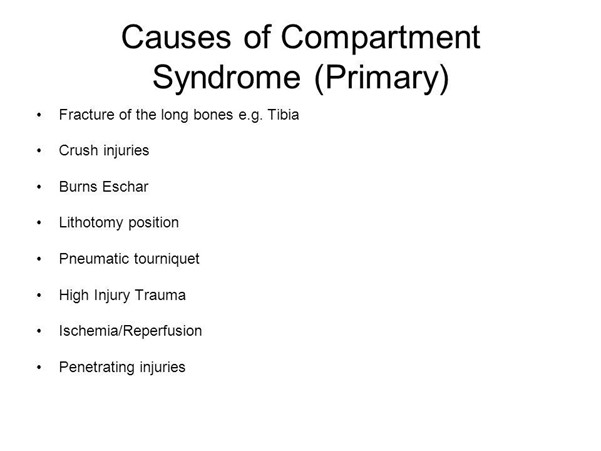A nurse notes increasing edema in the calf of a client who has multiple fractures of the leg. The nurse should recognize that increasing edema is a manifestation of which of the following complications?
Malignant hypothermia
Pulmonary embolism
Acute compartment syndrome
Fat embolism syndrome
The Correct Answer is C
A. Malignant hypothermia: This is a rare but life-threatening reaction to certain medications used during anesthesia. It doesn't typically manifest with calf edema.
B. Pulmonary embolism: While pulmonary embolism can occur as a complication in some cases, it is characterized by symptoms like sudden shortness of breath, chest pain, and may not directly cause calf edema.
C. Acute compartment syndrome
Increasing edema in the calf of a client with multiple fractures of the leg is a manifestation of acute compartment syndrome. Acute compartment syndrome occurs when there is increased pressure within a muscle compartment, which can lead to reduced blood flow, nerve damage, and tissue hypoxia. The edema and increased pressure can compress blood vessels, nerves, and muscle tissue within the compartment, resulting in symptoms such as severe pain, edema, and potential vascular compromise.
D. Fat embolism syndrome: This syndrome can occur in clients with long bone fractures, but it is characterized by respiratory and neurologic symptoms, not isolated calf edema.

Nursing Test Bank
Naxlex Comprehensive Predictor Exams
Related Questions
Correct Answer is B
Explanation
A. Venous thromboembolism (VTE) - While VTE can cause leg pain and swelling, the presence of fever, chills, and localized trauma history in this scenario points more toward cellulitis.
B. Cellulitis
The client's symptoms, including pain, swelling, fever, chills, and sweating, are indicative of cellulitis, which is a bacterial skin infection. The history of trauma to the leg (hitting the leg on the car door) could have introduced bacteria into the skin, leading to the infection. The client's diabetes mellitus type 2 also increases the risk of developing skin infections due to impaired immune function and circulation. Cellulitis often presents with localized pain, swelling, warmth, redness, and systemic symptoms like fever and chills. Immediate medical evaluation and appropriate antibiotic treatment are necessary for cellulitis.
C. Arterial insufficiency - Arterial insufficiency typically presents with symptoms like intermittent claudication, rest pain, and non-healing wounds due to poor circulation. The symptoms described in the scenario are more consistent with an acute infection (cellulitis) rather than chronic arterial insufficiency.
D. Thrombocytopenia - Thrombocytopenia is a condition characterized by low platelet count and does not directly cause localized pain, swelling, and redness in the leg as described in the scenario.
Correct Answer is ["200"]
Explanation
To calculate the rate at which the nurse should program the pump in milliliters per hour, you can use the following formula:
Rate (mL/hour) = Volume (mL) / Time (hours)
In this case, the volume is 1,000 mL (1 liter), and the time is 5 hours. Plugging these values into the formula:
Rate (mL/hour) = 1,000 mL / 5 hours = 200 mL/hour
So, the nurse should program the pump to administer the normal saline at a rate of 200 milliliters per hour.
Whether you are a student looking to ace your exams or a practicing nurse seeking to enhance your expertise , our nursing education contents will empower you with the confidence and competence to make a difference in the lives of patients and become a respected leader in the healthcare field.
Visit Naxlex, invest in your future and unlock endless possibilities with our unparalleled nursing education contents today
Report Wrong Answer on the Current Question
Do you disagree with the answer? If yes, what is your expected answer? Explain.
Kindly be descriptive with the issue you are facing.
